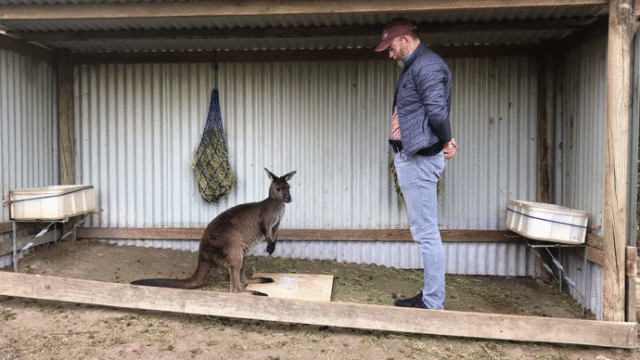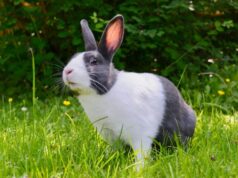Animals that have never been domesticated, such as kangaroos, can intentionally communicate with humans, challenging the notion that this behavior is usually restricted to domesticated animals like dogs, horses or goats, according to a first-of-its-kind study from the University of Roehampton and the University of Sydney.
The research, which involved undomesticated kangaroos at three locations across Australia, revealed that kangaroos gaze at a human when trying to access food inside a closed box. The kangaroos used gazes to communicate with the human instead of attempting to open the box themselves, a behavior that is usually expected for domesticated animals.
Ten out of 11 kangaroos actively looked at the person who had put the food in a box (this type of experiment is known as “the unsolvable problem task”). Nine of the 11 kangaroos additionally showed gaze alternations between the box and the person present, a heightened form of communication.
The research builds on previous work in the field which has looked at the communication of domesticated animals, such as dogs and goats, and whether intentional communication in animals is a result of domestication. Lead author Dr. Alan McElligott, University of Roehampton (now based at City University of Hong Kong), previously led a study that found goats can understand human cues, including pointing, to gather information about their environment. Like dogs and goats, kangaroos are social animals, and Dr. McElligott’s new research suggests they may be able to adapt their usual social behaviors for interacting with humans.
Dr. Alan McElligott said, “Through this study, we were able to see that communication between animals can be learned and that the behavior of gazing at humans to access food is not related to domestication. Indeed, kangaroos showed a very similar pattern of behavior we have seen in dogs, horses and even goats when put to the same test. Our research shows that the potential for referential intentional communication toward humans by animals has been underestimated, which signals an exciting development in this area. Kangaroos are the first marsupials to be studied in this manner and the positive results should lead to more cognitive research beyond the usual domestic species.”
Find your dream job in the space industry. Check our Space Job Board »
Dr. Alexandra Green, School of Life and Environmental Sciences at the University of Sydney, said, “Kangaroos are iconic Australian endemic fauna, adored by many worldwide but also considered a pest. We hope that this research draws attention to the cognitive abilities of kangaroos and helps foster more positive attitudes towards them.”
Provided by: University of Roehampton
More information: Alan G. McElligott et al. Kangaroos display gazing and gaze alternations during an unsolvable problem task. Biology Letters (2020). DOI: 10.1098/rsbl.2020.0607
Image: A kangaroo displays a gaze alternation between the unsolvable box and human.
Credit: Alexandra Green











